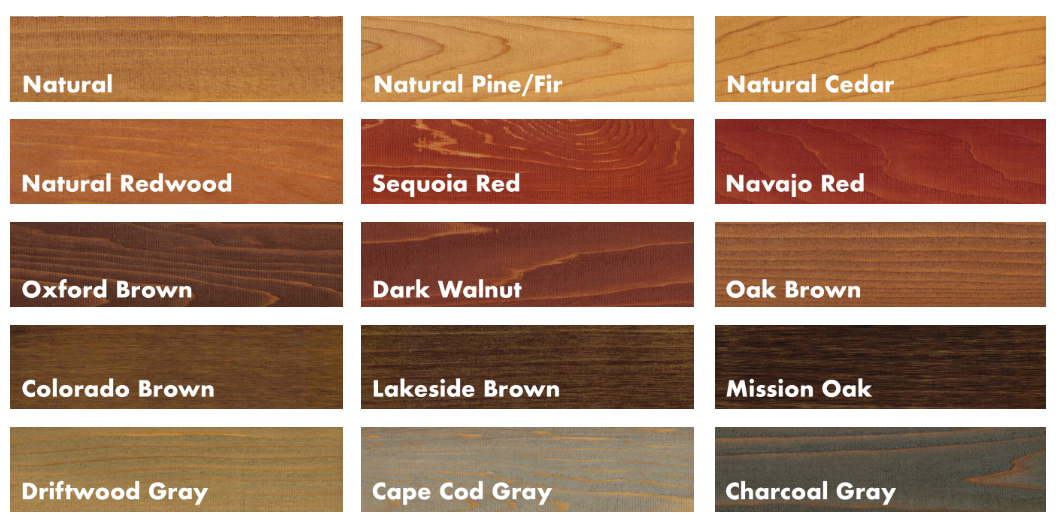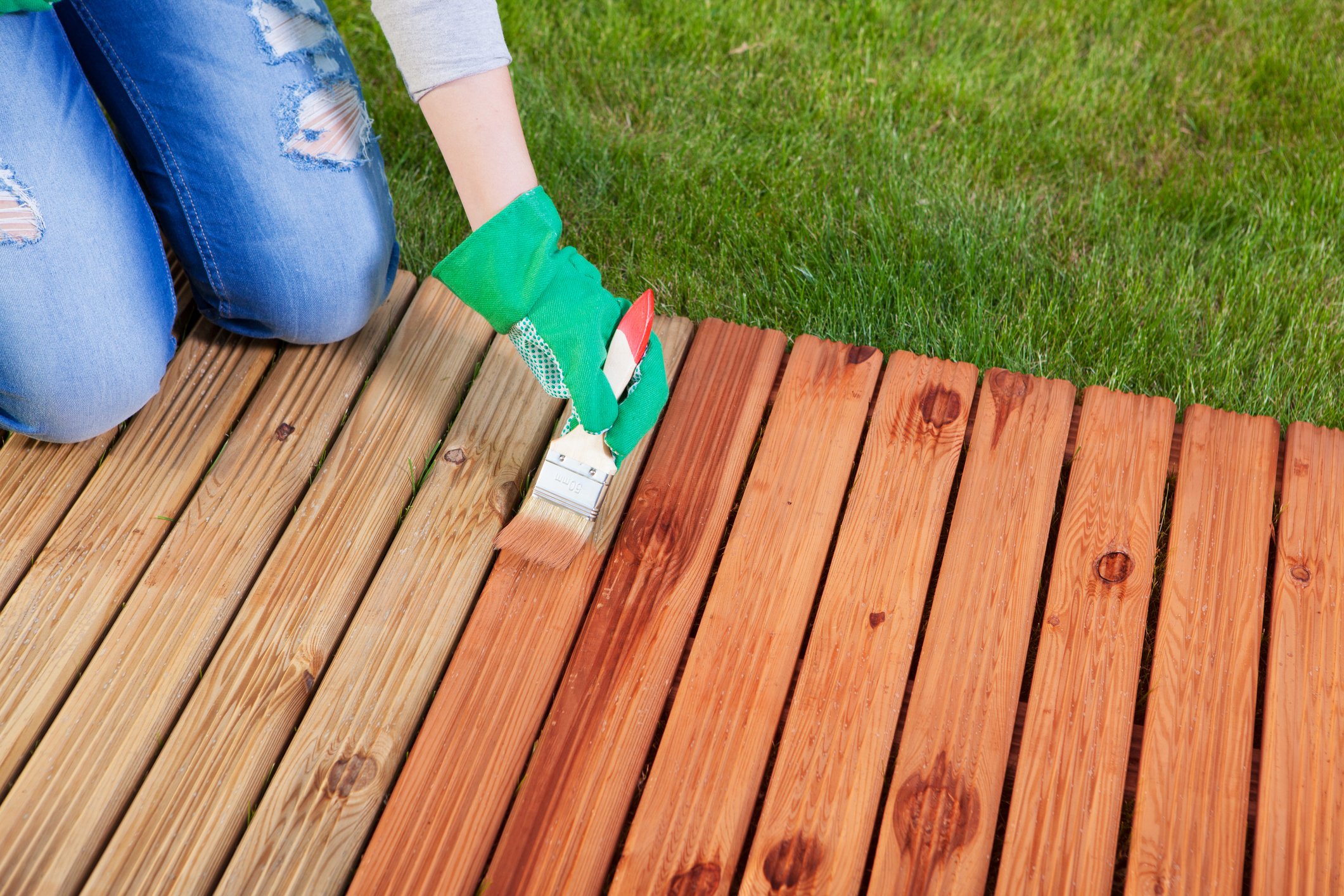Stain Deck for a Resilient End Up: Tips and Techniques
Stain Deck for a Resilient End Up: Tips and Techniques
Blog Article
A Comprehensive Overview to Different Sorts Of Deck Staining Techniques for Ultimate Protection and Looks
In the realm of deck maintenance, the art of tarnishing stands as a pivotal step in the direction of both preserving the honesty of your exterior room and improving its aesthetic charm. As we navigate via the detailed world of deck discoloration strategies, one begins to appreciate the nuanced strategies that can make all the distinction between a mediocre surface and a flawless one. From the choice of the appropriate tarnish kind to the precise application techniques, each element plays an essential duty in attaining that ideal balance between defense and looks. Join us as we reveal the keys behind accomplishing the utmost deck staining results-- a trip where every brushstroke forms not just the surface, however the extremely essence of your outdoor refuge.
Comprehending Various Kinds Of Discolorations
Different sorts of stains are generally made use of in the process of deck discoloration to achieve various aesthetic and safety impacts. Transparent discolorations are ideal for showcasing the all-natural grain of the wood while supplying minimal protection against UV rays and dampness. On the other hand, semi-transparent discolorations offer an equilibrium in between color improvement and security, allowing some timber grain to reveal through. For a more opaque coating that offers optimum protection versus the aspects, strong stains are the preferred selection. These stains can be found in a wide variety of shades and properly hide the wood grain.
In addition, there are additionally specialized stains such as sealers and toners. Toners add a hint of shade to the timber while offering minimal protection, making them appropriate for newer decks with much less wear. Sealants, on the other hand, deal defense versus dampness and UV rays without adding color, making them a preferred selection for decks that currently flaunt a desirable shade. Understanding the features and advantages of each sort of stain is crucial for attaining the preferred look and longevity for your deck.
Choosing the Right Spot Color
When thinking about the appearances of your deck discoloration task, the choice of discolor shade plays a crucial duty in enhancing the safety top qualities of the picked discolor kind (Water-Based Stains). The shade you choose can considerably influence the overall look of your deck, as well as its capability to withstand the components in time
When selecting a discolor shade, it's vital to take into consideration the existing shade system of your home's exterior. Harmonizing the deck tarnish with the general visual of your building can produce a cohesive and visually appealing outdoor space. Furthermore, the color of your deck discolor can affect the temperature level of the deck surface area; darker colors often tend to absorb even more warmth, while lighter colors mirror sunlight and remain cooler.
Additionally, the sort of timber you are tarnishing will certainly likewise impact just how the stain shade shows up. Various timber types can connect with the tarnish in various means, potentially changing the final shade. It's advisable to examine the discolor on a small, low-profile area of the deck to make sure the color transforms out as preferred prior to proceeding with the whole job.
Preparing Your Deck for Staining
To ensure a successful and durable deck discoloration task, thorough prep work of the deck surface area is necessary. Begin by cleaning the deck extensively to remove dirt, gunk, mildew, and any kind of old discolor or finish. Utilize a deck cleaner or a combination of water and cleaning agent in addition to a tight brush or stress washer to scrub the surface tidy. After cleansing, allow the deck to completely dry totally prior to moving on to the following action.
Evaluate the deck for any type of harmed or rotten boards that need to be changed. Hammer down any kind of protruding nails and sand any type of rough areas to make sure a smooth surface area for staining. Look for any kind of loose railings or steps that might need tightening up or repair service.
Once the deck is tidy, completely dry, and in excellent repair work, think about using a wood brightener to bring back the deck's natural color and open up the timber pores for much better stain penetration. Lastly, safeguard any type of nearby plants, furnishings, or surfaces with plastic bed linen before waging the staining process. Appropriate preparation is crucial to achieving a professional-looking finish and making the most of the durability of your deck discolor.
Applying Spot With Numerous Strategies
For a specialist and perfect coating, the approach of applying stain my site plays a vital duty in enhancing the appearance and resilience of your deck. There are numerous methods you can utilize to ensure an effective application of stain.
It is ideal for detailed locations and reaching between deck boards. Back-brushing after rolling is recommended to also out the tarnish and function it right into the timber for far better infiltration.
Spraying is one more popular strategy, offering speed and convenience of application, particularly for large deck areas. Whichever method you choose, ensuring appropriate prep work and complying with producer guidelines will help achieve a gorgeous and durable discolor finish on your deck.

Keeping and Re-staining Your Deck
When it comes to re-staining your deck, the frequency depends on various elements such as the kind of tarnish utilized, the environment in your location, and how much wear and tear your deck experiences. Generally, it is recommended to re-stain your deck every 2-4 years to keep its protection and aesthetic appeals.
Prior to re-staining, make certain the deck is clean, completely dry, and without any previous discolor residue. Sanding might be needed to ravel rough areas or eliminate old discolor that is flaking. Select a high-quality tarnish that fits your deck's product and gives the preferred level of security. Apply the tarnish uniformly utilizing the click reference proper method reviewed previously in this guide to make sure a resilient and stunning coating - Beautiful Deck. By remaining proactive with maintenance and re-staining, you can appreciate a well-protected and aesthetically enticing deck for years to find.
Conclusion
Finally, understanding the various sorts of deck stains, picking the ideal shade, correctly preparing the deck, using discolor with various strategies, and preserving and re-staining the deck are vital steps for supreme security and visual appeals. By complying with these steps, you can guarantee that your deck go to my site remains in leading condition for several years to find.
Furthermore, the color of your deck tarnish can influence the temperature level of the deck surface; darker shades tend to take in even more heat, while lighter shades reflect sunshine and remain cooler.
It's advisable to evaluate the stain on a little, inconspicuous area of the deck to make certain the shade turns out as desired before proceeding with the entire task.

Report this page